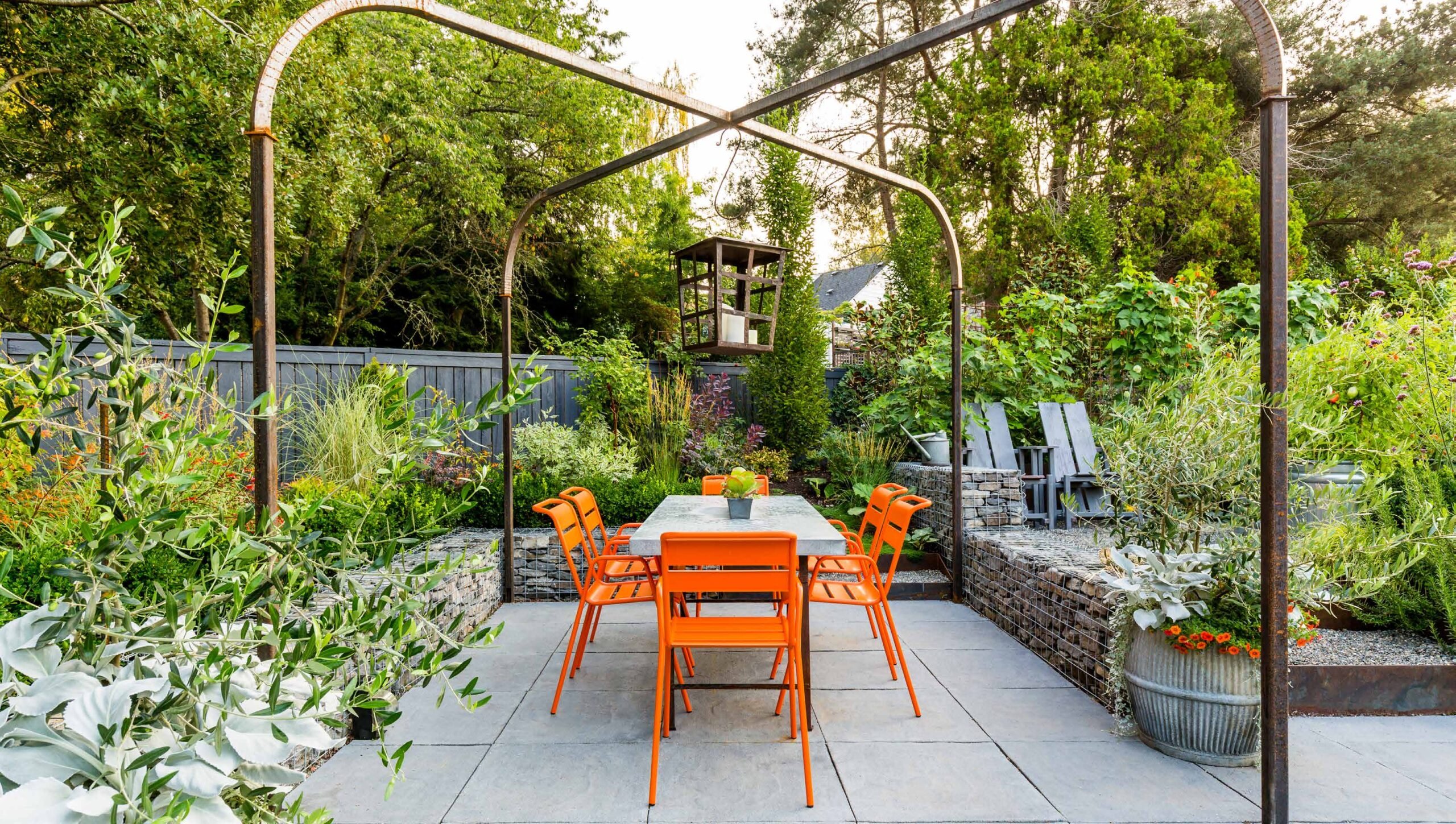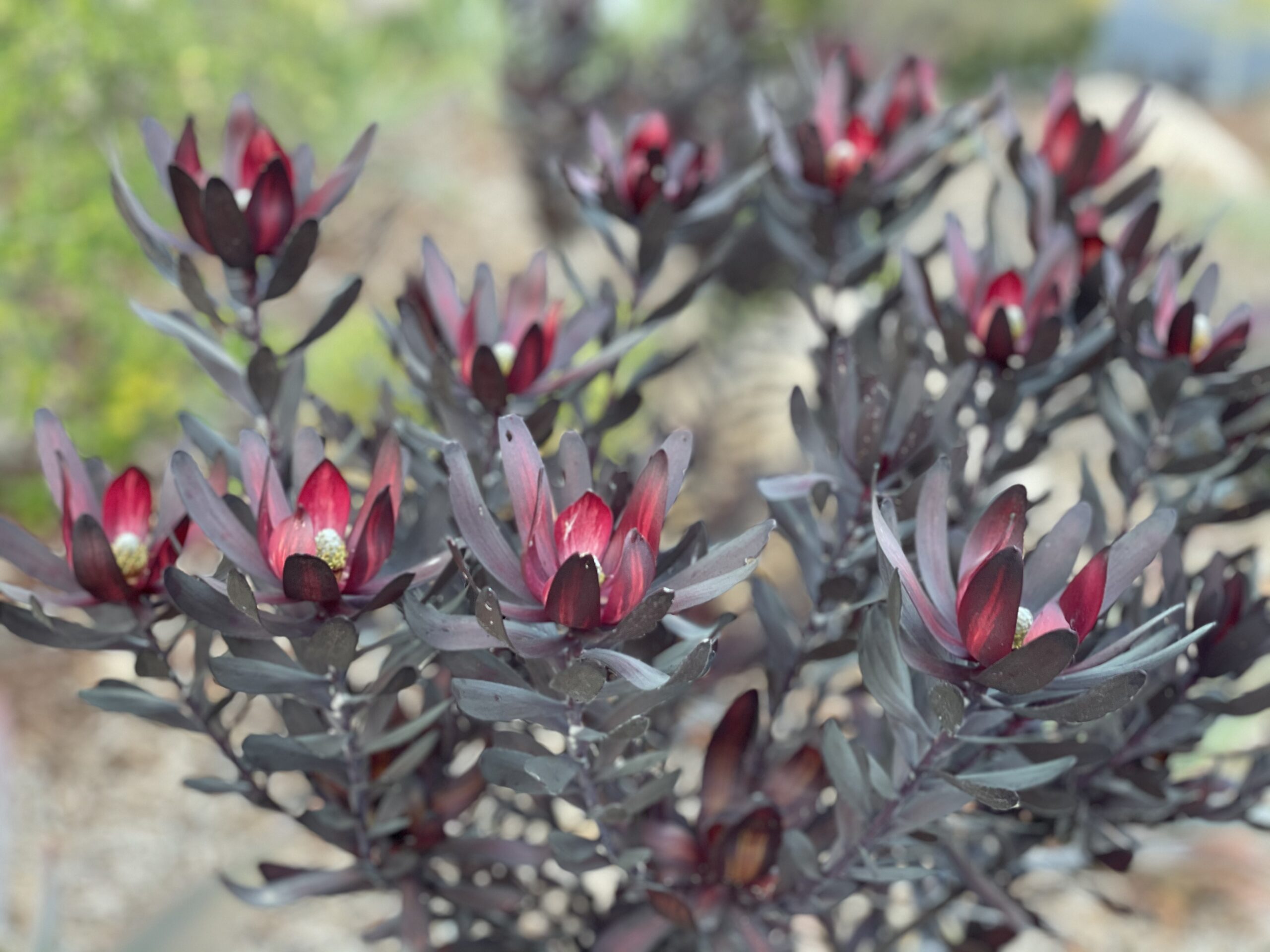

Contributor
- Topics: Archive, Sustainable Gardening
Summer 2022
Oh, summer: delightful warm air, tomatoes swelling on the vine, fragrant blooms on an evening stroll. When it’s warm and rainless, how is your garden looking? Dry? Or, if lush, might you feel a little guilty for sending drinking water outside to your plants? There is a drought on after all.
I have a secret. And I hope you all find it out. You’re sitting on a river of water. Hidden. Humble. Untapped. It flows under your feet as you make breakfast, get dressed, and brush your teeth. It flows past your thirsty plants, off to mingle with your neighbors’ water. Some people call it wastewater, but shouldn’t we only call it that if we waste it?

Water draining from showers, bathroom sinks, and washing machines is called greywater. This gently used water is not potable—not clean like drinking water—but can be a great source for irrigation. Water from toilets is not greywater and not suitable (or legal) for home-scale reuse.
By sending greywater into our landscapes, we use the same water twice: once inside to wash the clothes or take a shower, then a second time outside to grow plants. This reduces our dependence on imported water and keeps more water in rivers and streams available for other living things.
When you reuse greywater, the soaps and products used in the home now go into the yard. Are they harmful to plants? It turns out most aren’t, but a few ingredients can and should be avoided. To have high-quality irrigation water from greywater, choose biodegradable products that are low in salts and boron. Lots of salts (think white powdered detergents) can build up in the soil and damage plants. Boron, while non-toxic to people, is harmful to plants if it builds up. Chlorine bleach kills soil microbes.
If you choose products low in salts and free of boron, greywater is suitable to irrigate any thirsty plant—except root vegetables. Greywater should not touch the edible portion of plants to avoid it being accidentally ingested. You can always shut off your system if you need to use bleach or other such products.

Right: Greywater from the shower irrigates fruit trees and flowers in a gravity flow system. Photo credit: Leigh Jerrard, Greywater Corps
Getting Started with Greywater
You might wonder—is greywater like solar energy, but with water instead of power? With solar, you flip a switch and now your home is powered by clean, renewable energy. Greywater is different. All greywater, even if filtered, is dirtier than tap water and not compatible with a standard drip irrigation system. That’s why most greywater systems are stand-alone, watering a portion of the landscape. Advanced systems can use multiple water supplies in the same system. For example, greywater plus municipal water could irrigate the entire landscape. These advanced greywater systems are more common in new construction or remodels and tend to be cost prohibitive for retrofit projects. If your landscape is established with low-water-use plants and drip irrigation, one option to include greywater could be a separate zone for some medium- or higher-water-use plants, like fruit trees.

There are a few other general differences between greywater and potable water irrigation. Greywater can’t be stored more than one day and must be distributed via subsurface irrigation. Simple greywater systems use mulch in the landscape as a natural filter.
Though greywater reuse is a straightforward concept, tapping into this resource requires thoughtful planning. These five steps will help you get started.
- Understand your options. Learn about the different types of greywater systems and see which will work best for your situation. Some are quite simple and suitable for a do-it-yourself installation. Others are more complicated and require a specialized installer. A common and popular system is a stand-alone system from the washing machine, called a “laundry-to-landscape” system.
- Assess your site. Your site’s slop, soil type, plants, and home construction will all impact your greywater system design options. Flat- and downward-sloping yards often don’t need pumps, but uphill sites will. Trees, shrubs, and other perennials can be irrigated with simple systems.
- Choose a system that meets your needs.
- Design the system. Basic calculations determine how much greywater your home produces each week and how much water the plants need. From there, you can match the supply with demand.
- Install the system.

In a nutshell, a residential greywater system flows water from inside the home to the outdoors—to your plants. Over the years, I’ve found that simple greywater systems work wonderfully to irrigate the fruit trees, vines, and shrubs growing in my yard.
Backyard Resilience
Lovely landscapes can be more than just pretty. Shade trees cool our homes and neighborhoods while cleaning the air. Fruit trees provide hyperlocal food. Flowering plants feed native pollinators. Our yards can be safe havens for birds, butterflies, and other living things. Water restrictions don’t apply to greywater. You could consider it “drought insurance.” Greywater is a gift to sustain landscapes in the face of drought and water shortages. Healthy, hydrated plants also help with fire prevention.
This article is like a drop of greywater. There is a lot more out there—more to learn and more to implement. I hope it’s enough to pique your interest and inspire you to take the next step. The resources listed below are a good place to start. It’s 2022. Change is all around. Let’s change our landscape for the better.
Laura Allen is the author of Greywater, Green Landscape: How to Install Simple Water-Saving Irrigation Systems in Your Yard and the co-founder of Greywater Action.
Resources
Learn more about greywater systems at Greywater Action.
The San Francisco Public Utilities Commission also offers a free downloadable manual, San Francisco Graywater Design Manual for Outdoor Irrigation. [pdf]
Allen, Laura. 2017. Greywater, Green Landscape: How to Install Simple Water-Saving Irrigation Systems in Your Yard. North Adams, MA: Storey Publishing.
Greywater Corps, builds and teaches about eco-friendly greywater, rainwater, and stormwater capture systems.
Catching H20, is leading the charge in San Diego for the implementation of greywater and rainwater techniques for residential and commercial projects.
Share:
Social Media
Garden Futurist Podcast
Most Popular
Videos
Topics
Related Posts

Design Futurist Award Announced: Committee Shares Vision
March 8, 2023 At Pacific Horticulture, we believe that beauty can be defined not only by gorgeous plants and design, but also by how gardens

Ground Up Science for Greener Cities with Garden Futurist Dr. Alessandro Ossola
Spring 2023 Listen to the Podcast here. Alessandro Ossola is a scientist who gets very excited about the challenge of climate change allowing for an

Readying Urban Forests for Climate Realities with Garden Futurist Dr. Greg McPherson
Winter 2023 Listen to the Podcast here. “Going from the mow and blow to a more horticulturally knowledgeable approach to maintaining the landscape. And that

Expand Your Palette: Waterwise Plants for your Landscape
There’s nothing more thrilling to plant lovers than discovering new plants to test in the garden. Here in the southernmost corner of California, we have









Responses